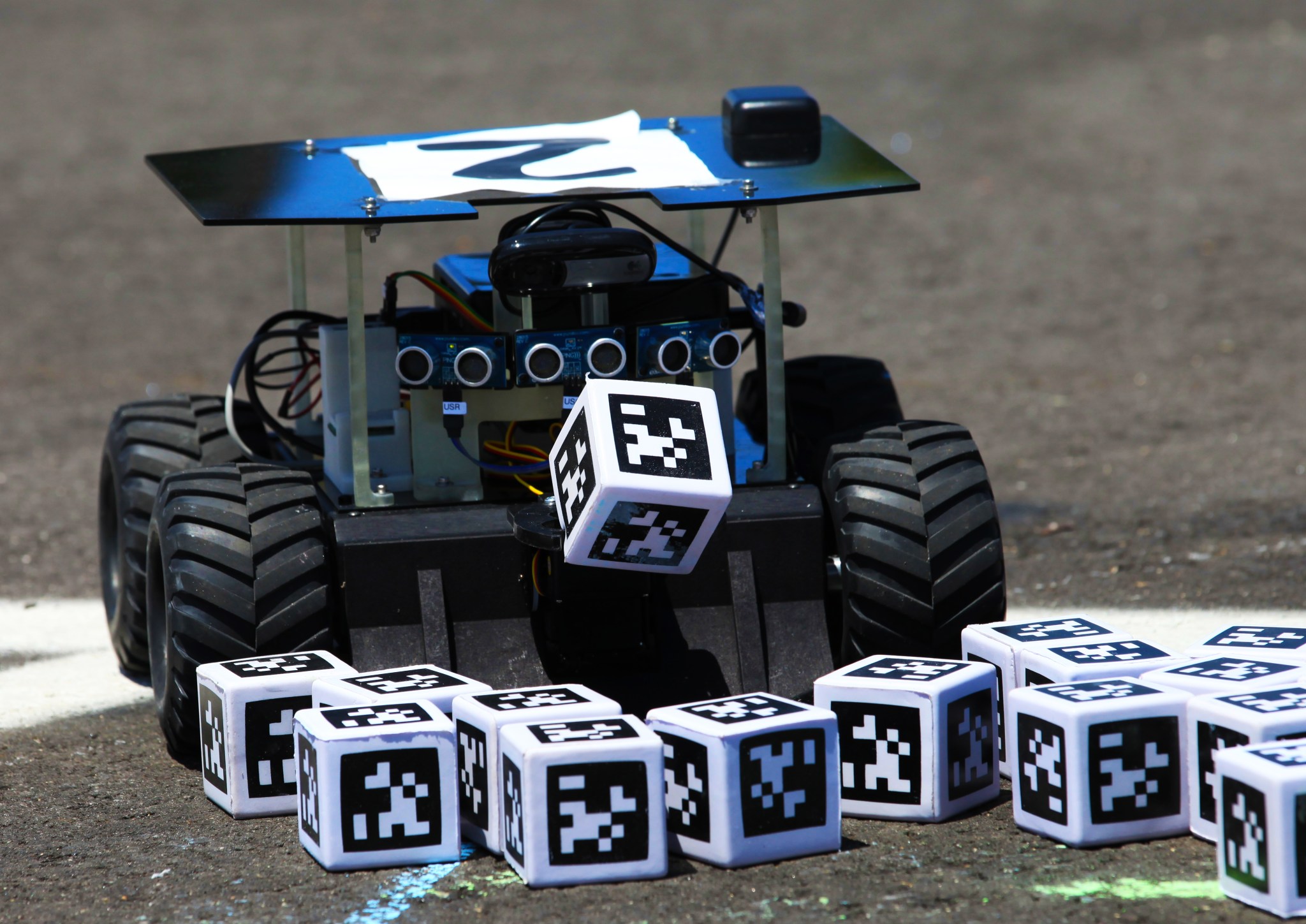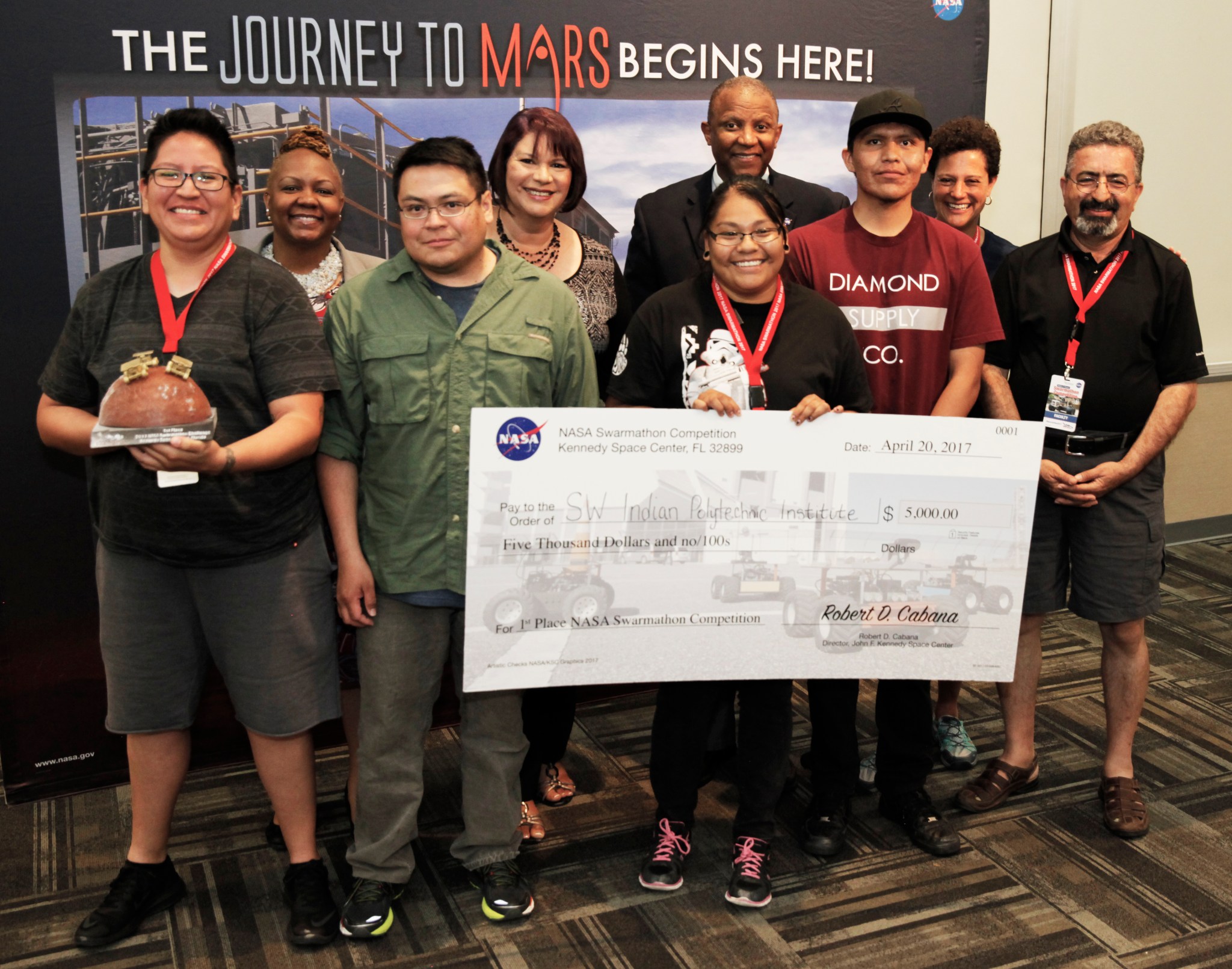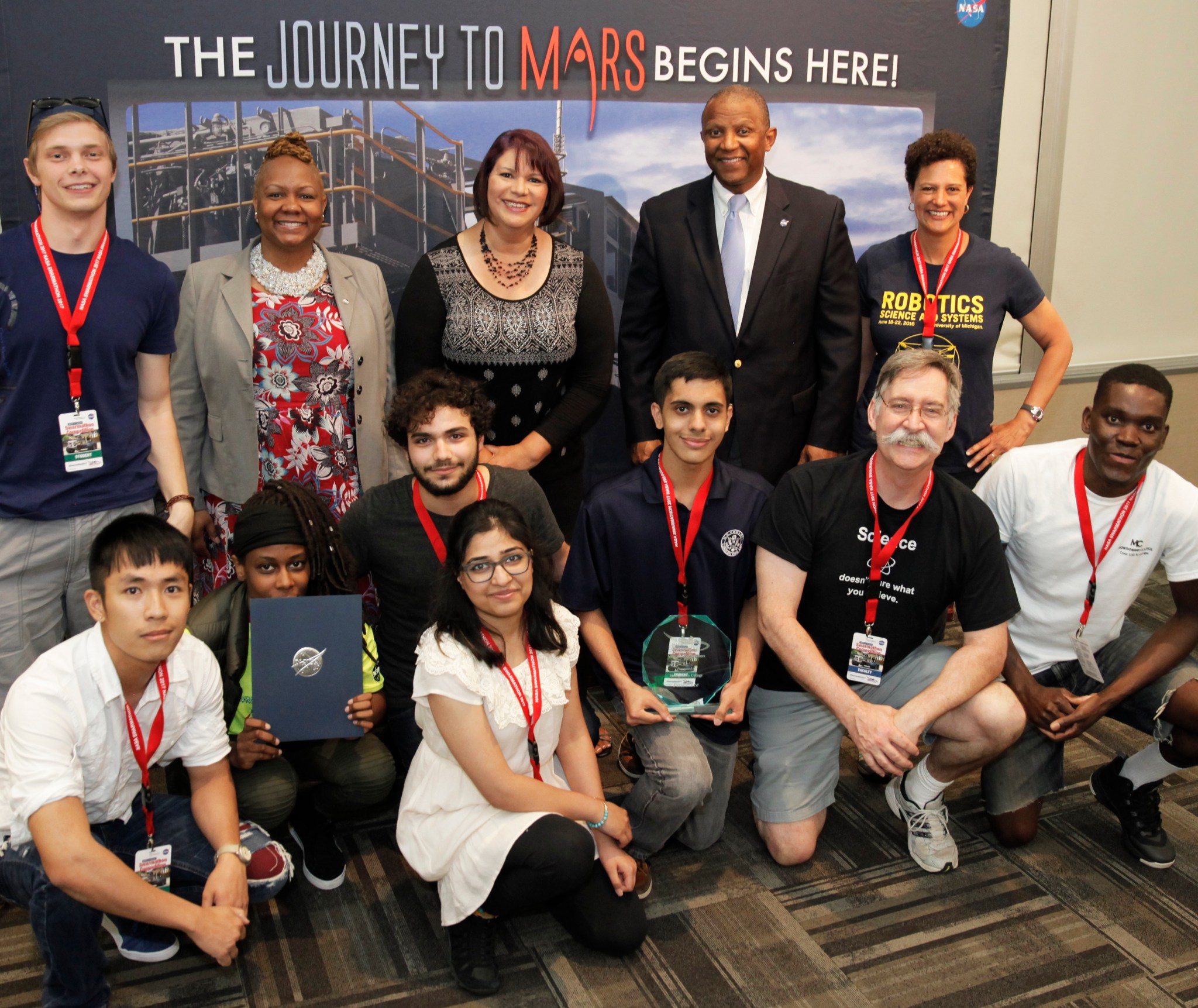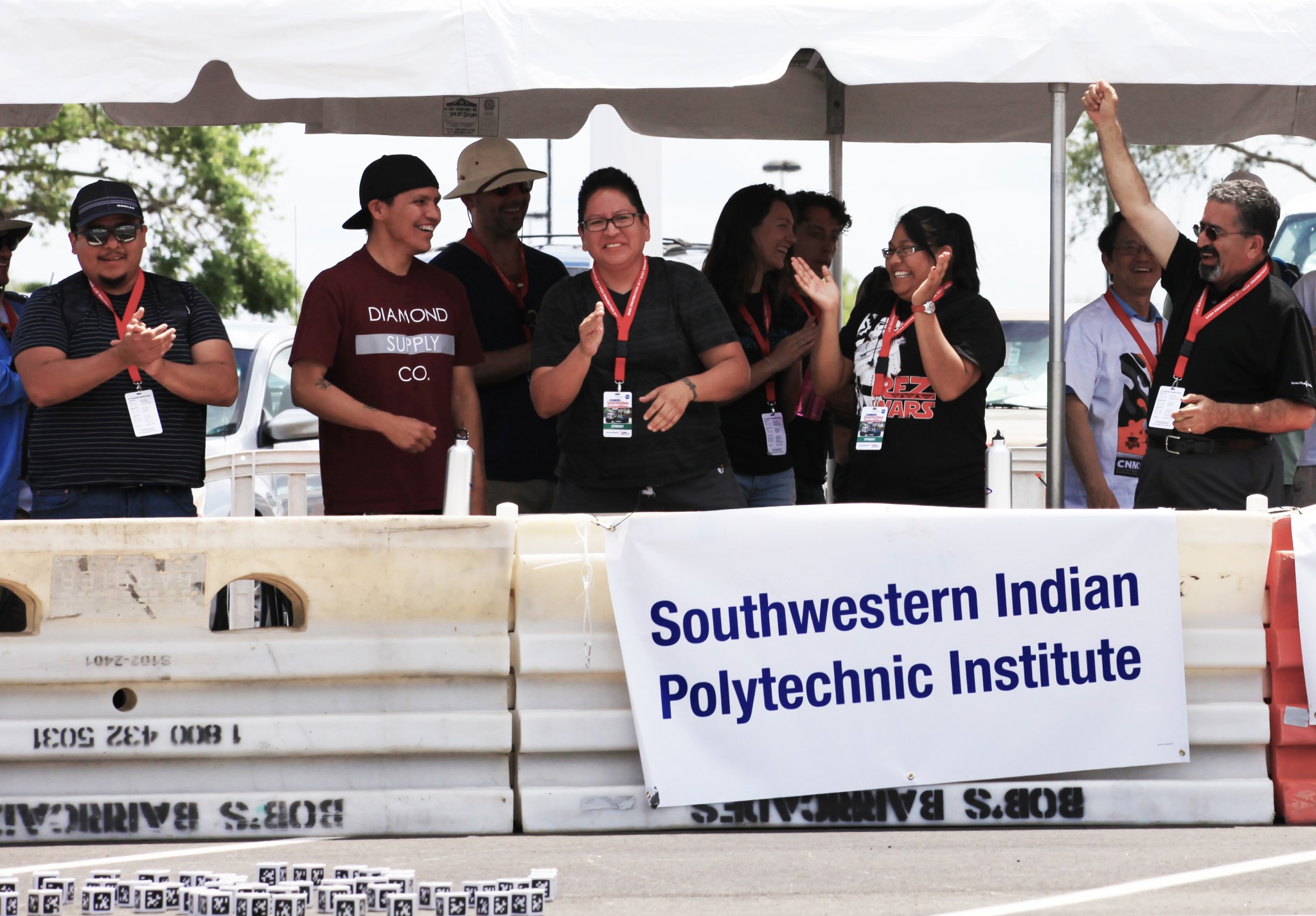By Bob Granath
NASA’s Kennedy Space Center, Florida
Students from colleges and universities from across the nation recently participated in a robotic programming competition at NASA’s Kennedy Space Center in Florida. Their research may lead to technology which will help astronauts find needed resources when exploring in deep space.
In the spaceport’s second annual Swarmathon competition, aspiring engineers from 20 teams representing 22 minority-serving universities and community colleges were invited to develop software code to operate innovative robots called “Swarmies.” The event took place April 18-20, 2017, at the Kennedy Space Center Visitor Complex. In addition to the event at Kennedy, 15 college teams participated in a virtual competition.
In her welcoming remarks, Kennedy’s deputy center director, Janet Petro, pointed out to the students that their endeavors to develop robotic software code are more than an academic exercise.
“All of the work that you have done – designing, coding, testing – will soon be put to the ultimate test,” she said. “You should be extremely proud of your accomplishments. You have shown tenacity, problem-solving, teamwork and innovation – all qualities that NASA highly values.”
Theresa Martinez, Minority University Research and Education Project (MUREP) Science, Technology, Engineering and Mathematics, or STEM, Engagement manager in Kennedy’s Education Projects and Youth Engagement Office, noted that this year’s Swarmathon got off to an exciting start.
“Right after we began, everyone watched the launch of an Atlas V,” she said. “That was a great way to get underway.”
During the first morning of the competition, the Orbital ATK CRS-7 resupply mission to the International Space Station lifted off atop a United Launch Alliance Atlas V.
Another exciting moment was the presentation of first-place awards to a team from Southwestern Indian Polytechnic Institute (SIPI) in Albuquerque, New Mexico. The students won this year’s Swarmathon, capturing a $5,000 cash prize. First place in the virtual competition went to Montgomery College in Rockville, Maryland, awarded a $3,000 prize.
SIPI student Chrissy Martinez participated in last year’s Swarmathon and expressed appreciation for the program.
“My experience with the Swarmathon team has been a great learning opportunity,” she said. “I am proud to have been a part of it.”
The small, four-wheeled Swarmies were designed through a collaboration between Kennedy’s Swamp Works laboratory and the University of New Mexico. It is a technology that could revolutionize space exploration by more effectively and efficiently locating hidden resources while astronauts explore distant destinations.
“Computer scientists have not yet figured out how to program robots to interact autonomously with unanticipated events in the real world,” said Dr. Melanie Moses, an associate professor of computer science at the University of New Mexico and principal investigator for the event.
To overcome those unknowns, researchers are developing Swarmies to focus not so much on the hardware, but the software. The Swarmathon is designed to help students improve their skills in robotics and computer science.
According to Kurt Leucht, a software team lead at NASA Kennedy, astronauts who work and operate on Mars for the long term will have to rely on technology called in-situ resource utilization, or ISRU.
“The first thing we will need to do is locate the precious resources,” he said. “One or two robots aren’t going to be all that efficient in searching a large area.”
As part of the NASA team testing Swarmies at the Florida spaceport, Leucht has built on the research conducted at the University of New Mexico operating on algorithms that tell the small robots to go out in different directions and randomly search an area for a particular material.
In the Swarmathon robots searched walled arenas looking for “resources” in the form of small cubes with AprilTags, which are similar to bar codes.
“The challenge was much more difficult this year,” Theresa Martinez said. “Instead of finding barcodes on the ground, this year the robots found AprilTag cubes and moved them to a ‘home’ square in the competition area.”
Like Chrissy Martinez, Kristiana Rendón, a student at Pasadena City College in California, participated in the 2016 Swarmathon. She explained the value of the event which helped improve her skills in robotics, as well as in integrating hardware and software.
“We had several opportunities to interact with NASA experts in the computer field,” she said. “They not only helped us with our Swarmie robots, but gave us insights on how we can develop more advanced robotics in the fields of aerospace and spaceflight.”


































